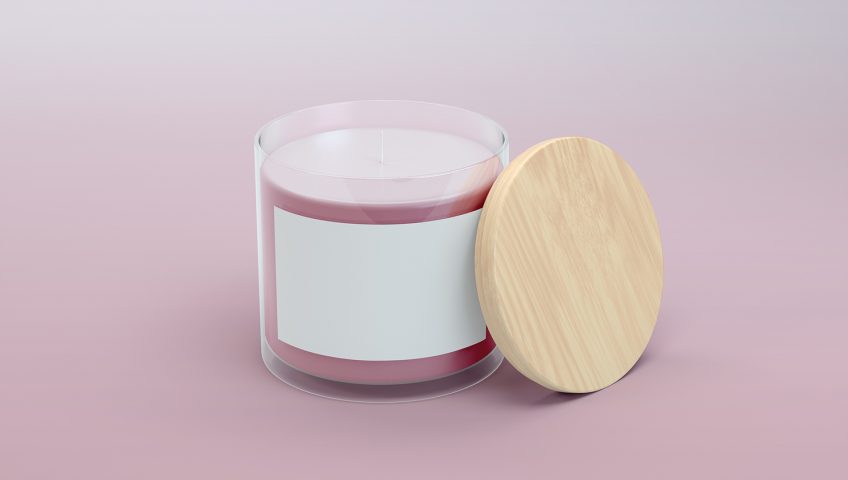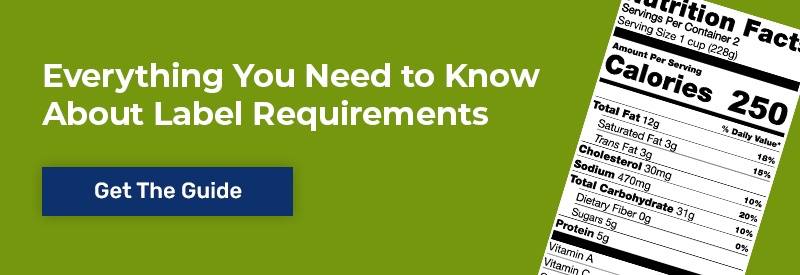
Candle Label Requirements, Guidelines, and Best Practices
How do you label a candle? While its design should attract customers, there are safety issues and legal requirements to contend with when labeling candles. If you’re selling any candle products or wax melts in the U.S, you need to meet the industry standards for candle label requirements as well as recommendations from several organizations, including the NCA, FPLA, ASTM, and CPSC. You also need custom candle labels that will stay on your products, even if subjected to the heat of the candle itself. Here’s what you should consider when picking label designs and materials for candles.
→ [Free Download] Do you know what to include in your candle and wax melt labels? View our guide on Labeling Requirements to get all the details.
What Products Follow These Guidelines?
The voluntary and mandatory safety standards set by government and industry organizations within the United States cover all types of wax candles and flammable candle-like products. That means these guidelines apply to anything that burns wax, including unscented candles, scented candles, and wax melts. These regulations cover products used in holders and warmers as well as those formed into containers, like candle jars and tea lights.
The Fair Packaging and Labeling Act (FPLA)
The FPLA covers legal requirements for front-facing labels. On rectangular containers, the label must cover one side. On round containers, it must cover 40% of the surface. This label must be placed directly on the candle, the candle container, or the packaging. A label can be tied to a bare candle as long as it fits the minimum size requirements. There are three pieces of information the label must include:
Statement of Identity
The statement of identity is a generic name for the product, such as “candle,” “scented candle,” or “wax melt.” While not required, it’s good practice to list the candle scent and the types of waxes used.
Company Name and Contact Information
The company name and contact information requirement applies to either the distributor or the manufacturer. This must include “manufactured for” or “distributed by” if your company did not make the candle. Only the town and state of the company are required, as long as other contact information is present. For example, you could list your location as “Anytown, State” along with a phone number and website address.
Weight
The product’s weight must be listed in both standard and metric measurements. This figure represents the entire candle weight, including wax and wick. The minimum font height for this information is determined by the size of your facing label:
Less than or equal to 5 square inches = 1/16 inch
5 to 25 square inches= 1/8 inch
25 to 100 square inches= 3/16 inch
If the text is embossed or molded on the label or container, the minimum height is 1/16 inch larger than the minimum printed height.
Any other information, such as average burn time, is not required.
Safety Labeling: Not Required, but Expected
In 2007, the Consumer Product Safety Commission (CPSC), ASTM International, and the National Candle Association (NCA) developed a voluntary labeling standard concerning candle warning labels. Although not required by law, the vast majority of candle manufacturers adhere to these labeling standards. The requirements for this label are covered by ASTM F2058. The National Candle Association has example labels and official pictograms on its website.
There’s a good chance you encountered similar standards while developing your product. This is just one set of standards developed to improve candle fire safety. There are also standards for glass container heat resistance (ASTM F2179), fire safety labeling design (ASTM F2417), and candle accessories (ASTM F2601). Unlike most safety standards, the use of ASTM F2058 is voluntary.
While this label isn’t ANSI, OSHA, or ISO compliant, it shares much of the design and language from safety labels required by these organizations. Here’s what should be on your safety label:
Signal Word
F2601 requires “Warning” printed in bold at the top of the label.
Safety Statements
The label must include the statement “Burn within sight.”
You can choose between text or approved pictograms for the following two statements:
- “Keep away from things that catch fire.” or “Keep away from things that burn.”
- “Keep away from children.”
You are also allowed to use both pictograms and text on the label.
Cautionary Material and Instructions for Use
Cautionary material and instructions include safety information, like when to trim the wick to reduce smoking. The safety warning label can be placed anywhere, including the bottom of the candle or container. Many manufacturers choose to use this space because it keeps the main product label uncluttered. Consumers are also more likely to leave the label in place and can refer back to it later. Additionally, you can use bottom labels for the product’s UPC barcode and the company identification required by the FPLA.
What Label Materials Should I Use on My Candles?
The label must be able to withstand extreme temperatures. Depending on your base wax, flame temperatures can reach as high at 1,500°F (815°C), while most waxes melt at temperatures between 120 and 160°F (49 to 71°C). The label also needs to withstand wide temperature fluctuations as the candle burns and is extinguished. The most common material choice is biaxially oriented polypropylene (BOPP). BOPP labels can withstand temperatures up to 300°F (149°C). Other polyester labels can handle temperatures up to 500°F (260°C), but they cost more than BOPP, and the added temperature resistance usually isn’t necessary to protect the label.
Adhesives need to work with the surface you’re placing them on. Different properties are required for application on metal, glass, and wax.
Direct thermal paper will turn black when exposed to heat. If you need to print lot numbers and other unique information on your candle labels, use thermal transfer printing.
What Kind of Label Machine Do I Need for My Candles?
Thanks to the flexibility of pressure-sensitive labels, it’s easy to get a custom label design that meets all of your requirements, including heat resistance and finished appearance. Once you have working labels, choosing a machine mostly comes down to container shape and label placements.
At CTM Labeling Systems, our front/back/wrap labeling system is built to handle round containers. It uses spindles to locate each container, spinning it in place as the label is applied. This system can apply a single wrap label and can orient the container for separate front and back labels. The conveyor system works with our 360a and 3600a labeling stations, so you can use this setup for both basic applications or print-and-apply labels. Only need a machine for wrap labeling? Our 360a Series Wrap System (WR) only applies to these labels. This is a great low-cost option that handles a wide range of label and container sizes.
If your candle business uses boxes or square candle containers, take a look at our 360a Series Top Bottom Split Conveyor Labeling System. As containers pass through this machine, labels are applied to the top and the bottom of the packaging in one motion using two separate applicators, saving both time and money.
Get a Labeling System That Works With Your Products, No Matter What You Make
Pressure-sensitive labels work with a wide range of materials, making them a great choice for anything from cans to candles. If you’re looking for a new system to label your products, contact CTM Labeling Systems. We have local distributors who can work with you to design a solution for your products and production system (and ensure you meet all necessary candle label requirements).





